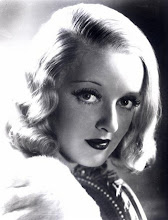But I'm back at school, and this is going to be a great semester for film blogging -- I'm declaring a second major in Radio/Television/Film, with an emphasis on critical studies. My original major is Writing Arts with a concentration in Creative Writing; this results, for example, in a Wednesday schedule that looks something like watch a movie, read some poetry, watch another movie. All during class time. I love college.
However, before I get too far into the school year, I still have to finish telling you about how I spent my summer. And so, with no further ado, I present to you what was probably my other favorite place in Paris...

Voilà, la Cinémathèque Française!
La Cinémathèque is a film history museum located in Bercy, Paris. It houses artifacts stretching back to the days of the Lumière brothers and earlier, a permanent exhibit on Georges Méliès, a library, and at the time I was there, an exhibit on Jacques Tati, among other cinematic jewels. Unfortunately, photography was not permitted inside the museum, but in lieu of pictures I made sure to take notes!
The general museum takes up two floors. Among the treasures on display downstairs were original sketches of the set of The Cabinet of Dr. Caligari, a reproduction of the robot from Metropolis, and the head of Mrs. Bates from Psycho. A collection of costumes included a dress worn by Elizabeth Taylor in Little Women, Mae West's turban from Belle Of The 90s, jewelry that Theda Bara wore in A Girl In Every Port, and my personal pièce de résistance, the dress that Ann Baxter wore as the title character accepted the Sarah Siddons award in All About Eve.
Upstairs, there was some information about the history of la Cinémathèque itself, including several telegrams protesting the firing of its founder, Henri Langlois, a scandal that ultimately caused the temporary closure of the whole museum. The names adorning these messages include Otto Preminger, Vincente Minelli, George Cukor, Charlie Chaplin, Fritz Lang, Stanley Kubrick, and Orson Welles, among others. An honorary Oscar awarded to Langlois was also on display, as were early posters and logos for la Cinémathèque.
The Méliès exhibit, located on another floor separate from the main museum, was comprised of two rooms linked by a dark and narrow hallway befitting the mysterious air of the man himself. The first room focused mainly on his career as a magician and his love of illusion; it included the 35mm film projector he built for use at the Robert-Houdin Theater in 1896, some of his early stage costumes, and other artifacts from his time in the theater. The second room was dedicated to his directorial career. On display there were hand-tinted photographs from the late 19th century, a model of Studio A, photographs of Studio A taken before its destruction in 1945, and drafts of posters for Voyage Dans La Lune. Additionally, Voyage Dans La Lune was playing in loop on a small screen suspended from the ceiling. There was only one folding chair on the floor in front of it, but as I was perusing the exhibit several people were standing around watching. Isn't it wonderful to know that, nearly a century later, this early masterpiece can still draw a crowd?



oh, I need to go there!! You must have thought you died and went to heaven! :)
ReplyDeleteOh, I did! And there was so much more I didn't get to see, because I'm not yet fluent in French. But it's definitely motivated me to try harder in that class this semester. I'd love to go back there and just camp out in the library.
ReplyDeleteKateGabrielle is always the first to comment! She's so quick.
ReplyDeleteTHank you so much for posting this. It sounds like an amazing museum! You are definitely lucky to have gone. I would have liked to have seen the repro robot from Metropolis and Theda Bara's jewelry.
Interesting! Thanks for sharing this. I would like to check out that museum one day.
ReplyDelete